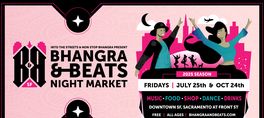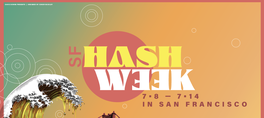You could mistake JD McPherson for a revivalist, given how few other contemporary artists are likely to assert, as he boldly does, that “’Keep a Knockin’ by Little Richard is the best record ever made. It’s so insanely visceral, you feel like it’s going to explode your speakers. If I’m listening to that in the car, I find myself having to brake suddenly. I can listen to that and it makes me feel like I’m 20 feet tall. And the feeling of joy I get from that record is always going to be the real push behind trying to make music.”But in a very real sense, McPherson is much more a pioneer than roots resuscitator. He’s knocking at the door of something that arguably hasn’t yet been accomplished—a spirited, almost spiritual hybrid that brings the forgotten lessons from the earliest days of rock & roll into a future that has room for the modernities of studio technique and 21st century singer/songwriter idiosyncrasies that Richard Penniman would not recognize. Let the Good Times Roll, his second album, is a stranger, and more personal affair than its Fats Domino-redolent title might at first suggest, but the name isn’t exactly ironic, either. If you, too, brake for pleasure, you’ll screech to a halt at the enrapturing sound of these Good Times.His first album, 2012’s Signs & Signifiers, was hailed as “an utterly irresistible, slicked-back triumph” by Mojo and “a rockin’, bluesy, forward-thinking gold mine that subtly breaks the conventions of most vintage rock projects” by All Music Guide. The Washington Post wrote that, “he and his bandmates are great musicians taking ownership of a sound, not just mimicking one.” That same review remarked upon how, “the album sounds as if the band is in the same room with the listener.” But for the follow-up, McPherson wanted to maintain that raw power while also capturing the more mysterious side of the records he loves. To that slightly spookier end, he enlisted as a collaborator Mark Neill, known for his work as a producer and engineer with versed-in-the-past acts going back to the Paladins in the 1980s, but, most recently, for recording The Black Keys and Dan Auerbach—a friend of McPherson’s who co-wrote the new album’s “Bridge Builder.”Talking up one of the freshly minted tunes, “Bridge Builder,” McPherson describes it as being “the psychedelic Coasters.” That no such thing really existed prior to this album doesn’t deter him. “This is something I actually talked about with Mark at the beginning of the record: ‘I want to make a ‘50s psychedelic record!’”Neill was up to meeting that seemingly oxymoronic challenge. “It’s still a rock & roll record, but the borders are expanding a little bit,” McPherson explains. “With some of the writing that came out this time, it became apparent the songs weren’t going to lend themselves well to our usual process. So as we sought out a producer, we took aim for a slightly wider—I guess hi-fi is the word—sound, and got more experimental. Mark Neill certainly has all the tools in his hardware shop with which to produce any range of sounds from vintage Capitol Records stuff on up to…gosh, we listened to so much David Bowie making this record. We’d play Primal Scream’s Screamadelica to listen to how they suddenly started making dance records, and then Mark would play us Marilyn McCoo singing ‘Marry Me, Bill’ over and over again, I guess trying to re-wire our brains.”Amid this flurry of possible influences, a few production approaches stuck. “I find that the records that I like to listen to over and over again are the ones that have those strange engineering choices, or weird sounds. I was very attracted to the idea of using plate reverb. So whereas the first record was really informed by New Orleans rhythm and blues, where everything was very dry and up-front, I really was listening more this time to a ton of Link Wray, and the Allen Toussaint-produced Irma Thomas stuff, and all the early ‘60s rock & roll that is saturated in plate reverb.”McPherson certainly doesn’t begrudge the attention that Signs & Signifiers unexpectedly brought him. “If it hadn’t been for the ‘North Side Gal’ video, this probably never would have caught on,” he says, recalling the fame he found on YouTube even before Rounder picked up his indie release. “That’s how we found our label and found our management. I was still teaching school, and here I am with got this video that’s like a million hits. I’m like, what? I had no plans to quit my job. Luckily, I lost it.” A middle school art department’s loss was Rounder’s and the rock world’s gain.
show less
You could mistake JD McPherson for a revivalist, given how few other contemporary artists are likely to assert, as he boldly does, that “’Keep a Knockin’ by Little Richard is the best record ever made. It’s so insanely visceral, you feel like it’s going to explode your speakers. If I’m listening to that in the car, I find myself having to brake suddenly. I can listen to that and it makes me feel like I’m 20 feet tall. And the feeling of joy I get from that record is always going to be the real push behind trying to make music.”But in a very real sense, McPherson is much more a pioneer than roots resuscitator. He’s knocking at the door of something that arguably hasn’t yet been accomplished—a spirited, almost spiritual hybrid that brings the forgotten lessons from the earliest days of rock & roll into a future that has room for the modernities of studio technique and 21st century singer/songwriter idiosyncrasies that Richard Penniman would not recognize. Let the Good Times Roll, his second album, is a stranger, and more personal affair than its Fats Domino-redolent title might at first suggest, but the name isn’t exactly ironic, either. If you, too, brake for pleasure, you’ll screech to a halt at the enrapturing sound of these Good Times.His first album, 2012’s Signs & Signifiers, was hailed as “an utterly irresistible, slicked-back triumph” by Mojo and “a rockin’, bluesy, forward-thinking gold mine that subtly breaks the conventions of most vintage rock projects” by All Music Guide. The Washington Post wrote that, “he and his bandmates are great musicians taking ownership of a sound, not just mimicking one.” That same review remarked upon how, “the album sounds as if the band is in the same room with the listener.” But for the follow-up, McPherson wanted to maintain that raw power while also capturing the more mysterious side of the records he loves. To that slightly spookier end, he enlisted as a collaborator Mark Neill, known for his work as a producer and engineer with versed-in-the-past acts going back to the Paladins in the 1980s, but, most recently, for recording The Black Keys and Dan Auerbach—a friend of McPherson’s who co-wrote the new album’s “Bridge Builder.”Talking up one of the freshly minted tunes, “Bridge Builder,” McPherson describes it as being “the psychedelic Coasters.” That no such thing really existed prior to this album doesn’t deter him. “This is something I actually talked about with Mark at the beginning of the record: ‘I want to make a ‘50s psychedelic record!’”Neill was up to meeting that seemingly oxymoronic challenge. “It’s still a rock & roll record, but the borders are expanding a little bit,” McPherson explains. “With some of the writing that came out this time, it became apparent the songs weren’t going to lend themselves well to our usual process. So as we sought out a producer, we took aim for a slightly wider—I guess hi-fi is the word—sound, and got more experimental. Mark Neill certainly has all the tools in his hardware shop with which to produce any range of sounds from vintage Capitol Records stuff on up to…gosh, we listened to so much David Bowie making this record. We’d play Primal Scream’s Screamadelica to listen to how they suddenly started making dance records, and then Mark would play us Marilyn McCoo singing ‘Marry Me, Bill’ over and over again, I guess trying to re-wire our brains.”Amid this flurry of possible influences, a few production approaches stuck. “I find that the records that I like to listen to over and over again are the ones that have those strange engineering choices, or weird sounds. I was very attracted to the idea of using plate reverb. So whereas the first record was really informed by New Orleans rhythm and blues, where everything was very dry and up-front, I really was listening more this time to a ton of Link Wray, and the Allen Toussaint-produced Irma Thomas stuff, and all the early ‘60s rock & roll that is saturated in plate reverb.”McPherson certainly doesn’t begrudge the attention that Signs & Signifiers unexpectedly brought him. “If it hadn’t been for the ‘North Side Gal’ video, this probably never would have caught on,” he says, recalling the fame he found on YouTube even before Rounder picked up his indie release. “That’s how we found our label and found our management. I was still teaching school, and here I am with got this video that’s like a million hits. I’m like, what? I had no plans to quit my job. Luckily, I lost it.” A middle school art department’s loss was Rounder’s and the rock world’s gain.
read more
show less
Date/Times:
The Fillmore
24 Upcoming Events
1805 Geary Blvd, San Francisco, CA 94115
The Best Events
Every Week in Your Inbox
From Our Sponsors
UPCOMING EVENTS
Great suggestion! We'll be in touch.
Event reviewed successfully.









